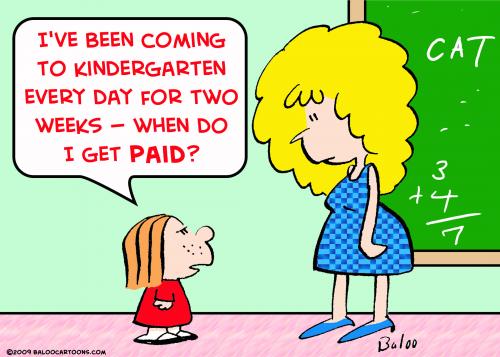New York City schools welcomed 50,000 four year-olds to prekindergarten last week. Ginia Ballafante summarized crisply the dilemma facing over 4,000 pre-K teachers:
“How the city’s educators will cultivate an environment of thrilling, digressive learning while aiming to reduce the enormous word deficits many children come to school with and at the same time keep the tensions and pressures of high-stakes testing from filtering down to the world of tiny people with Pixar lunchboxes remains one of the most significant and least explored questions around the expansion of prekindergarten. How they will nurture the distinct kind of teaching skill required to execute play-based learning successfully is yet another.”
And Ballafante is right on the mark. If kindergarten is the new first grade as some progressive critics point out, then prekindergarten threatens to become boot camp for kindergarten.
First, let me establish that kindergarten is, indeed, becoming the new first grade. In a recent studylooking back at how kindergartens have changed in the past 15 years under a regime of testing and accountability, researchers found the following:
*The percentage of teachers who indicated that incoming kindergarteners need to know most of their letters or count to twenty doubled. In 1998 less than one-third of kindergarten teachers agreed that children should learn to read in kindergarten. By 2006 that number had more than doubled to 65 percent.
*There was no change in percent of time spent on math instruction but there were significant drops in teaching time spent on social studies, science, art, and physical education.
Many urban children come to preschool (and kindergarten) with many strengths (often unrecognized in school settings) and weaknesses such as deficits in words that are the currency of formal schooling. The onset of testing five year-olds has commenced–25 states mandateassessing 5 year-olds. So how to get young children up to speed to do well on these tests has accelerated the move toward academic instruction for kindergarteners with the pressure inevitably seeping down to three year olds. This shift toward academic instruction has put the spotlight on exactly how much of school experiences for three-to-five year-olds should be play and how much academic work in light of the demands of testing for determining first grade for young children and teacher evaluation.
Two Bank Street College educators (New York City), however, do not see a conflict between work and play for pre-kindergartners. “This is a false choice,” they say. “We do not need to pick between play and academic rigor.” They continue:
As they play, children develop vital cognitive, linguistic, social and emotional skills. They make discoveries, build knowledge, experiment with literacy and math and learn to self-regulate and interact with others in socially appropriate ways. Play is also fun and interesting, which makes school a place where children look forward to spending their time.
What does play look like in a room filled with three- and four year-olds?
When you step into an exemplary pre-K classroom, you see a room organized by a caring, responsive teacher who understands child development. Activity centers are stocked with materials that invite exploration, fire the imagination, require initiative and prompt collaboration. The room hums.

You need to be a member of School Leadership 2.0 to add comments!
Join School Leadership 2.0